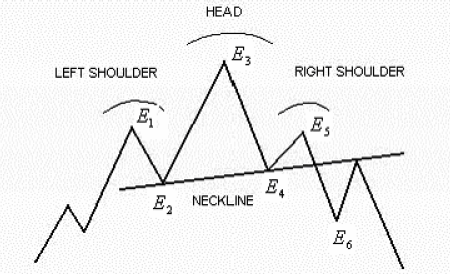Does the head-and-shoulders stock price pattern embody investor attitudes that traders can exploit to earn abnormal returns? Or, does it represent an opportunity for the statistics-challenged to be fooled by randomness? In their October 2006 paper entitled “The Predictive Power of ‘Head-and-Shoulders’ Price Patterns in the U.S. Stock Market”, Gene Savin, Paul Weller and Janis Zvingelis use a pattern recognition algorithm, as filtered based on the experience of a technical analyst, to determine whether head-and-shoulders price patterns formed across intervals of 63 trading days have predictive power for future stock returns over the next few months. Using daily price data during 1990-1999 for all stocks in the S&P 500 and Russell 2000 indexes as of June 1990, they conclude that:
- Across the entire sample, hundreds of head-and-shoulders patterns typically form each quarter.
- For S&P 500 stocks, a trading strategy that shorts stocks based on head-and-shoulders patterns alone is not profitable over the period 1990-1999. For Russell 2000 stocks, there is weak evidence of profitability.
- However, on average stocks significantly underperform the market on a risk-adjusted basis in the three months after head-and-shoulders patterns, by an annualized 5%-7% for Russell 2000 stocks. Shorting these stocks over this period is not profitable during the 1990s because the upward drift of the market overwhelms this underperformance.
- Results imply that head-and-shoulders analysis could generate significant excess returns (up to 8% per year) when used to design hedged portfolios.
- Some, but not all of the underperformance after head-and-shoulders patterns is attributable to negative stock price momentum.
The following figure, taken from the paper, depicts an ideal head-and-shoulders pattern. Technical analysts assert that such patterns signal an imminent further decline in the stock price.

In summary, head-and-shoulders technical analysis is likely unprofitable as a standalone trading strategy in rising markets, but it may work well in designing hedged portfolios.